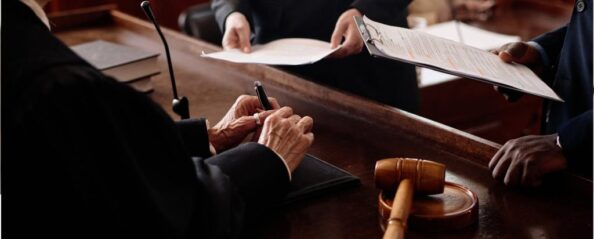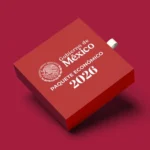Source: Olivares
Progressing the case
Typical procedural steps
What is the typical sequence of procedural steps in commercial litigation in this country?
In the Mexican legal system, there are several types of commercial trials, the most common being the ordinary commercial trial.
This trial begins with the filing of the lawsuit and the reply by the defendant. After this, a hearing is set for the preparation and to conduct evidence and, if applicable, for the conciliation of the parties if they so decide.
Once the evidence has been filed, the period of allegations is opened, which are the last declarations of the parties before the judge issues a resolution to the procedure.
Once the period of allegation has concluded and the parties submit their briefs, the judge will issue a resolution, which may be challenged through an appeal.
Another procedure is the commercial oral trial, and the general rule is that parties can follow this trial, depending on the amount under dispute.
In these cases, the procedure of the trial is similar to an ordinary trial at the beginning, with the filing of the lawsuit and the response by the defendant. However, the difference is that after this initial stage, there are three hearings that will be conducted by the judge:
- The preliminary hearing in which the parties can reach an agreement and the judge will admit the evidence filed.
- The second hearing in which the parties can expose their final arguments and the evidence will be presented.
- Finally, the judge will issue their final decision in the matter.
Importantly, in these trials, there is no appeal stage, only a constitutional action called an amparo lawsuit before a federal court.
Bringing in additional parties
Can additional parties be brought into a case after commencement?
There is a possibility that third parties who were not originally contemplated in the procedure may appear before it.
One of the most common cases is when a third party appears because the resolution affects them indirectly, and they may even oppose the execution of the resolution, which must be resolved by the judge.
It is essential that the third party has a legal interest in the matter so that it can appear in the litigation.
Consolidating proceedings
Can proceedings be consolidated or split?
To avoid contradictory resolutions in certain cases that are related to each other, the accumulation to be decided jointly is possible. It shall be ordered by the judge and may be at the request of the parties or ex officio.
Court decision making
How does a court decide if the claims or allegations are proven? What are the elements required to find in favour, and what is the burden of proof?
The Mexican Constitution establishes that all resolutions issued by the authorities must be based on the applicable law and in accordance with the essential formalities of the procedure.
In this sense, the court must base its resolution strictly on the arguments of the parties, along with the evidence offered by them to reinforce their arguments, and the judge must use the applicable body of law to issue the resolution.
Regarding the burden of proof, as a general rule, anyone who asserts a fact is obliged to prove it. The plaintiff is not obliged to prove negative facts. Some documents have the presumption of validity, which means that the content of the document will be considered authentic unless proven otherwise.
The evidence will be evaluated and assessed by the judge. In either a commercial or civil trial, the judge must evaluate all the evidence that was legally submitted by the parties, analyse their arguments, and then verify whether the claim of the plaintiff is proven or if, on the contrary the defendant proved the defences.
As mentioned, the general rule is that all evidence will be evaluated by the judge in the final resolution, but it is important to note that there are some points that should be considered depending exclusively on the type of evidence submitted.
First, the evidence must be pertinent to the case, and the parties must provide arguments to justify it. Along with this, the evidence must be offered according to the applicable law, since different types of evidence have particular rules; therefore, if the evidence is not submitted in accordance with the law, it can be dismissed.
Moreover, all documents must be filed in Spanish (or in the original with a translation), and if there are international documents, they must be duly apostilled and notarised.
All public documents submitted as evidence will have presumption of validity; this means that their content will be considered as true, and those documents that do not have such nature will not have full value as evidence.
Expert evidence will also have presumption of validity on its content, but it will only be applicable when specialist knowledge is required. Both parties can assign their own experts, but if the experts’ opinions are contradictory the judge will name a third expert. The judge can use any part of the opinions to provide the final decision, so may take elements from all the opinions.
Confessional evidence developed and executed in the trial will be taken into account at the time of issuing the resolution. If the confessional evidence is related to other evidence, its legal value will increase and the judge will consider this evidence in a more forceful way.
Finally, for witness evidence, there are also several rules the judge will take into consideration, and the witness must specify when, where and how the action happened.
To conclude, even though every type of evidence has specific rules regarding execution and evaluation of the judge, its value may depend on the analysis of the judge, and they will use its logical rules as support for the final decision.
How does a court decide what judgments, remedies and orders it will issue?
Judicial decisions will be made taking into consideration the evidence, arguments and facts submitted to the dispute between the parties, and a determination will be made by the judge based on these elements.
The judge can only issue a resolution regarding the request of the plaintiff and the defence. This means that the judge cannot extend the effect of the resolution to something that was not expressly requested by the parties.
The decisions of the judge consist of three elements – precedents, reasoning and orders, and are structured as follows:
- the judge proceeds, identifying the parties;
- an account of the dispute and the litigation between the parties is raised;
- the evidence and arguments of the parties are pointed out and evaluated; and
- the judge issues a resolution based exclusively on the evaluation made between the arguments of the parties and the evidence offered during the development of the procedure.
Evidence
How is witness, documentary and expert evidence dealt with?
As for documentary evidence, this is either private or public. Private documentary evidence has no legal presumption and is usually related to private documents such as agreements. However, public documentary evidence has a presumption of validity, since it is a document issued by an authority or attested by or through a notary public. This evidence must be accompanied in the initial writ and is evaluated by the judge.
Testimonies in the ordinary commercial trial are conducted in an oral format and before the judge. The witness must be indicated before the court and will be summoned to appear on a specific date and answer the questions prepared by the party that offered the testimony evidence. The party that offered the evidence asks the questions. However, before the witness answers, the judge qualifies and determines if the question is related to the case. If so, the witness must answer. If not, the judge dismisses the question.
Finally, for expert evidence, it is necessary to mention in the suit who will be the expert and his or her expertise, capabilities or academic degrees. The proof should be prepared, establishing the justification of the evidence and providing the questions that will be answered in the expert’s report. The expert will offer his or her opinion; and prior to issuing an expert opinion, the other party may propose an expert.
Oral evidence does not have a higher evidential level, but will be suitable depending on whether strict rules are adhered to for approving the questions. As mentioned, our system is very formalistic, thus the questionnaire should be approved under very general strict rules governing its construction before any oral deposition.
How does the court deal with large volumes of commercial or technical evidence?
The courts are obligated to receive any type of evidence. In some cases, it is possible to file technological and digital media, such as a USB drive, containing the information.
Can a witness in your jurisdiction be compelled to give evidence in or to a foreign court? And can a court in your jurisdiction compel a foreign witness to give evidence?
Our country is part of the Inter-American Convention on the Taking of Evidence Abroad, so it is possible to request the collaboration of a witness in a foreign court, or on the contrary, foreign authorities can request the collaboration of a national witness.
The Convention establishes that a letter of request must be issued, stating the details of the evidence to be disclosed and the information requested. This Convention not only mentions testimonial evidence, but it is also possible to release expert evidence in this manner.
It is also possible to present foreign documents as evidence in the trial, which must be duly legalised or apostilled. By complying with these requirements, the evidence will be fully valid in Mexico.
How is witness and documentary evidence tested up to and during trial? Is cross-examination permitted?
As for documentary evidence, this is either private or public. Private documentary evidence has no legal presumption, and is usually related to private documents such as agreements; on the other hand, public documentary evidence has a presumption of validity, since it is a document issued by an authority or attested by or through a notary public. This evidence must be accompanied in the initial writ of lawsuit and is evaluated by the judge.
Testimonies in the ordinary commercial trial are conducted in an oral format and before the judge; the witness must be indicated before the court and will be summoned on a specific date to appear and answer the questions prepared by the party that offered the testimony evidence. The party that offered the evidence asks the questions. However, before the witness answers, the judge qualifies and determines if the question is related to the case. If so, the witness must answer. If not, the judge dismisses the question. Cross-examination is permitted.
Time frame
How long do the proceedings typically last, and in what circumstances can they be expedited?
Usually, a traditional commercial procedure can take one to three years to obtain a resolution at the first stage.
This resolution can be challenged through an appeal and then can be challenged through an amparo lawsuit.
Therefore, considering the three stages, it is possible that the whole procedure may take a minimum of 2.5 years up to four to six years in normal cases. Very complex cases can stretch to more than a decade.
Commercial controversies where credit is involved, according to the amount, may be prosecuted through an oral ‘expedite’ procedure or the traditional written way. If it is an oral proceeding, the decision cannot be appealed; namely, a final decision can be expected in approximately one to two years.
Gaining an advantage
What other steps can a party take during proceedings to achieve tactical advantage in a case?
In our legislation, there is a motion called medios preparatorios, which allows means of evidence to be obtained for a subsequent judgment.
The medios preparatorios, or with the recognition of the debt before the judge, give more certainty to the action that is possessed. Nevertheless, this depends exclusively on the circumstances of every case.
It is possible to initiate an administrative procedure to obtain a document that will be filed as evidence.
Likewise, as a medio preparatorio, confessional evidence of the potential defendant may be offered to answer questions related to the possible litigation with the purpose of obtaining more information on the matter.
Impact of third-party funding
If third parties are able to fund the costs of the litigation and pay adverse costs, what impact can this have on the case?
If the defendant reaches an agreement with a third party to cover the costs of litigation, it will have no real impact on the merits of the case, as the third party will not have any participation in the litigation.
Impact of technology
What impact is technology having on complex commercial litigation in your jurisdiction?
The Mexican legal system has been equipped with new technology and it is now possible to present writs, consult legal resolutions and review the judicial file electronically. However, it is necessary to obtain authorisation from the judge, and, in most cases, an additional tool called ‘electronic signature’ is required by the involved parties.
It is reported that the Judicial Authority is working on alternatives to make the use of electronic resources even more efficient, for example facilitating lobbying efforts through electronic means.
Documentary evidence may include chats, conversations and emails; however, it is still necessary to present the evidence in paper form. In some cases, it is possible to submit evidence contained in a CD or USB drive.
Until now, it has not been possible to conduct testimonial evidence or expert opinions by this means. However, in some cases, experts appointed by the parties have been allowed to accept the charge and ratify their technical opinions via video conference.
Parallel proceedings
How are parallel proceedings dealt with? What steps can a party take to gain a tactical advantage in these circumstances, and may a party bring private prosecutions?
It is possible for a dispute to involve several procedures and various venues. Depending on the strategy of the case, the restriction is that the case can have different causes of action.
Symbiosis focuses its efforts in terms of export promotion, assistance with direct investment, and internationalization of Canadian companies. With deep cultural and business ties with the region and an understanding of the challenges presented to Canadian clients doing business in Mexico. Our team is positioned to timely and efficiently assist clients in providing counsel and the legal tools to assist in their positioning in Mexico. For further information, please contact us or book a call/video conference with a member of our team, it would be our pleasure to meet you and talk about your project.






